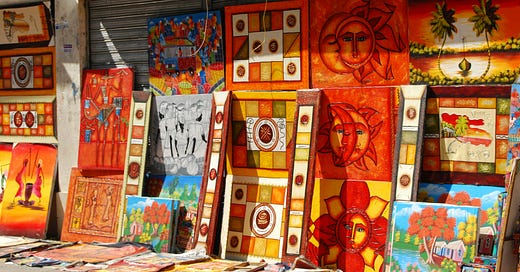“Despite receiving an art education across three different academies, I was never taught how to price my work. Money was never discussed, not even when we asked our tutors for guidance.”
Paula Parole (for FOLLOW.ART’s Guide to the ‘Modern Art World’)
Money is not a comfortable topic; It is often avoided or brushed under the rug. When it comes to art institutions, it is seen as a vulgar intrusion into the purity of creativity.
Without talking about pricing, however, how are we supposed to learn how to do it?
This lack of guidance is more than just a frustrating outlier; it’s systemic. For an industry that relies so heavily on creative labor, the absence of clear conversations about value and compensation speaks volumes.
But here’s the truth: if we want to make the art world a healthier, more welcoming place, we need transparency. We need communication. And yes, we need to get comfortable talking about money.
So, how do you price your art?
Let’s start with what we know: there’s no magic formula, but there are guidelines. Pricing is more art than science, but that doesn’t mean you can’t approach it with structure.
A solid first step is understanding your market. Are you selling online? Through a gallery? At local fairs or international shows? Different platforms come with different expectations and pricing brackets. A painting priced at €3,000 in a gallery might not move at €300 in a street fair.
Next, research comparable artists. Look for others with a similar style, experience level, and medium. What are they charging? How consistent are their prices? This kind of research helps you ground your pricing.
Speaking of which, separating feelings from facts is crucial. While your art might hold deep personal significance, pricing should be driven by objective factors like size, materials, labor, and market demand. If a piece is too sentimental to part with, consider not selling it at all.
If you prefer to keep it simple with formulas, there are options:
(Hourly Rate × Hours Worked) + Cost of Materials, or
(Height × Width) × Price per Square Inch for 2D works.
Still, these methods often do not take into consideration the environment in which you’re selling or your experience in the field. While they aren’t perfect, they give you a starting point. From there, you can adjust based on what the market will bear. Remember: be consistent. Drastic jumps in pricing for similar work can confuse or alienate potential buyers and undercut your credibility.
Also, consider your sustainability. Underselling can quickly lead to burnout. If you’re constantly making art but barely covering materials, it’s time to reassess.
And please, make your pricing public! Nothing signals uncertainty like “DM for price.” Transparent pricing helps buyers trust you. It signals that you’ve thought this through and that your prices aren’t shifting based on who’s asking.
Pricing is not about ego. It’s about sustainability.
We often tie our worth as artists to how much someone will pay us, but pricing your work is not a judgment on your talent. It’s a business decision. Don’t let imposter syndrome set your rates. Let research and planning guide you instead.
“You want to grow your market like a garden. That means you want to prepare the soil and sow the seeds with low prices and patiently tend your career so that your prices can grow organically.”
Crista Cloutier, ‘How to Price Your Art’
Let’s normalize talking about money. Let’s share our numbers, our doubts, our questions. Because when we open up, we don’t just empower ourselves; we empower the entire creative community.






